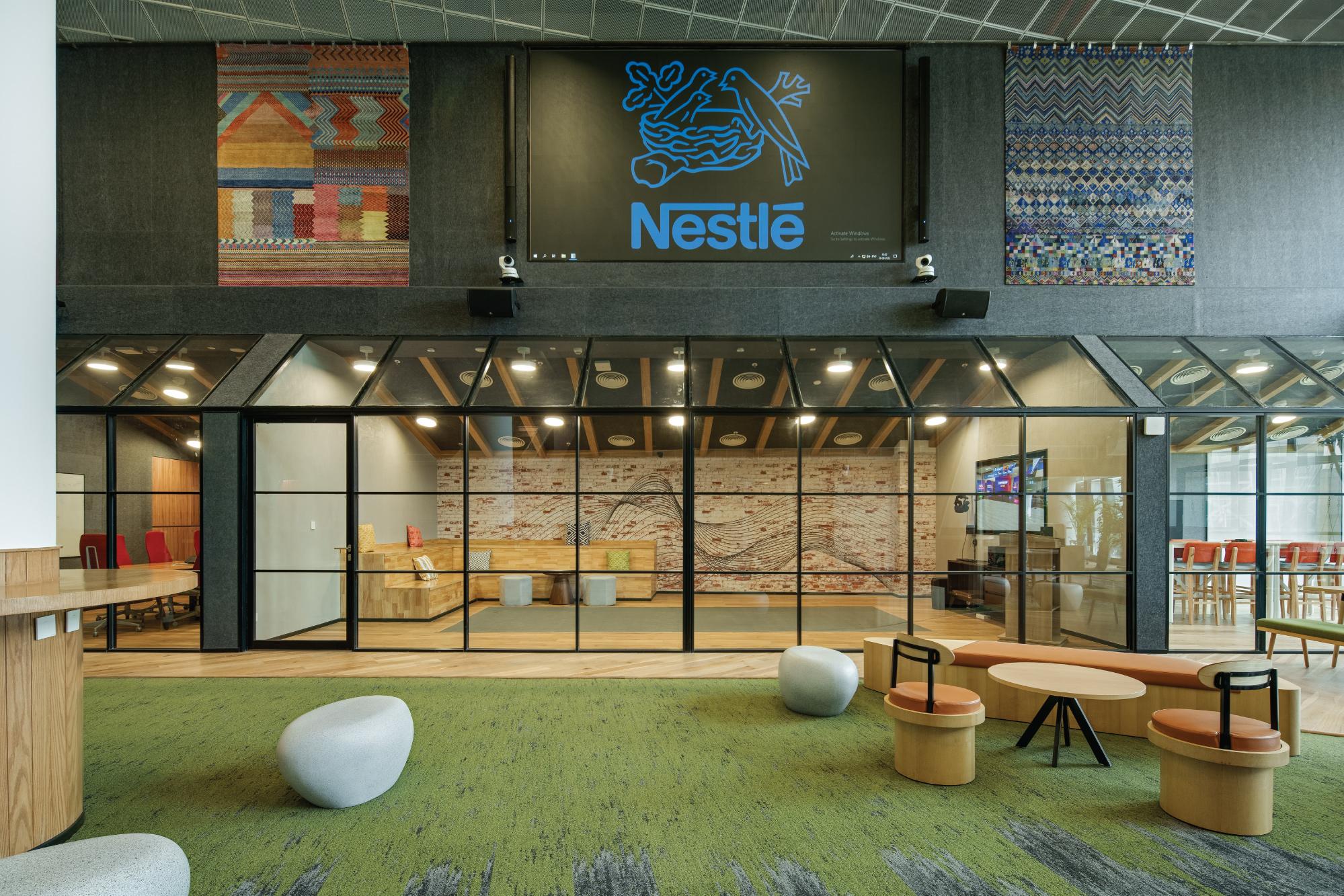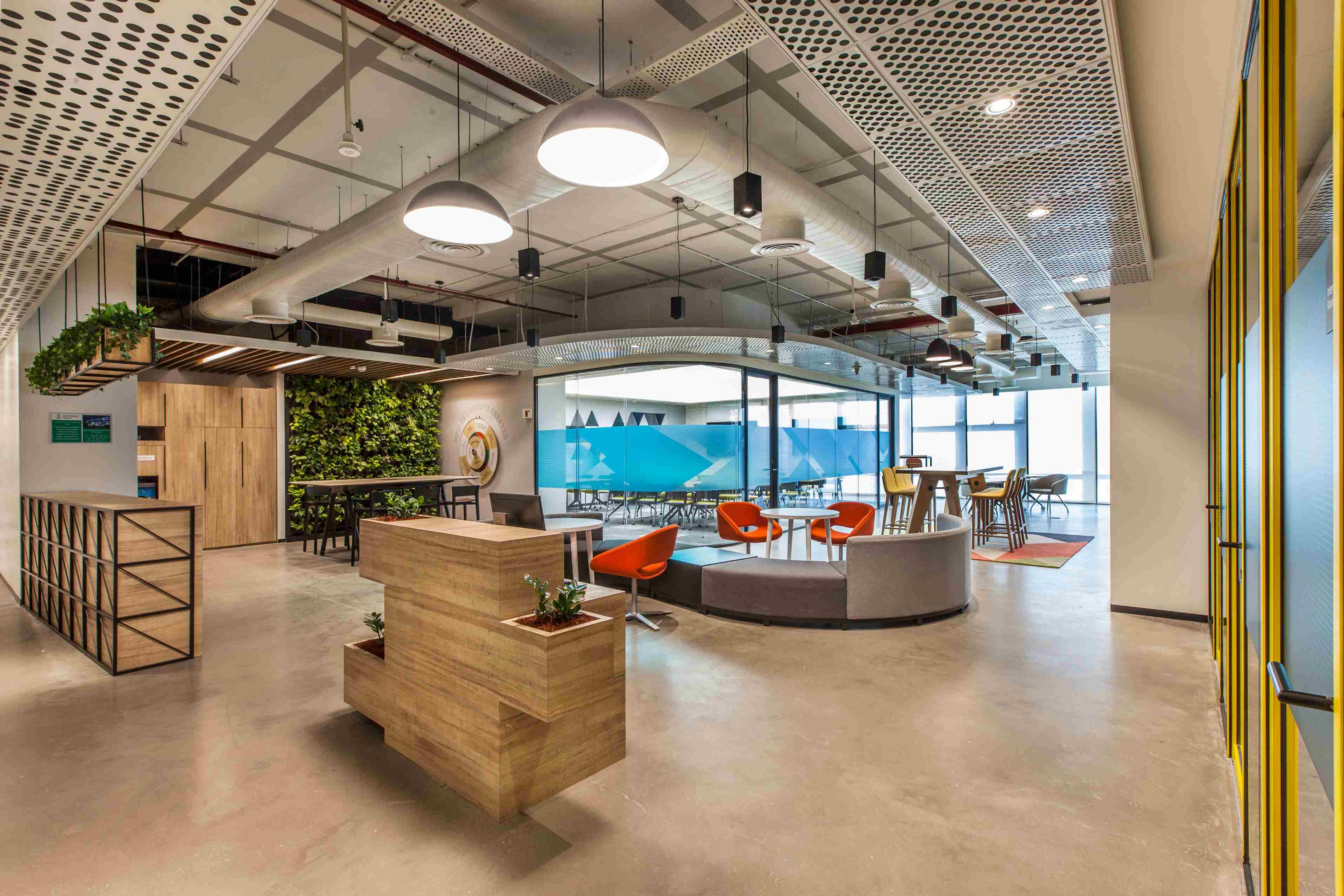Nestlé's Workplace Design Strategy To Motivate Their Employees
In today's scenario, where companies seek to acquire the best talents and implement great strategies, only a few companies that aim to create a progressive culture can succeed.
Nestlé is the world's largest and most diverse food and beverage corporation. It has a distinct global footprint and a market for its products across 186 countries around the world. The brand promotes sustainability and has an industry-leading financial performance. Nestlé has been able to earn the trust of consumers by improving people's quality of life and contributing to a healthier future. These values contribute to the brand’s commendable position in the global industry. Reaching these heights of success is possible only with the nurturing of a positive company culture. These ideals had to be reflected in the workplace Nestlé envisioned for itself and its employees.
These very attributes provide a deeper insight into how Space Matrix designed the Nestlé Workplace which prioritises the brand's employees, values, essence and work culture.
Over the years, Nestlé, as a brand, has gained its employees' trust. This has established mutual respect and responsibility between the employees and the company. The Brand has successfully nurtured a community of people with a shared purpose. Such a relationship has been able to retain the employees in the company for a very long time. Since most employees have been associated with the organization for many years, bringing a change in workplace design that was easy to adapt was of utmost importance. The hybrid space was to be designed such that it motivates most employees to come to the office. Further, the workspace design was aimed to cater to the different working styles and offer various elements in one space itself.
Space Matrix envisioned a space re-attributed to activities that enable individuals to be more effective rather than a one-size-fits-all open office solution. To facilitate mobility and flexibility in the workplace, it is essential to create a fluidic design. The team intended to spatially plan the facility to assist Nestlé in adapting to a hybrid workspace through a pleasant and flexible design layout. Here are a few examples of spaces in Nestlé's workplace design:
The Nestlé Workplace is all about Practical design to enable productivity
Space Matrix reimagined the workplace design to support work and play while bringing in activity-based and community-focused spaces where work thrives. We created different zones to allow employees to select their preferred work settings. Each location is self-sufficient, with easy access to breakout areas. The space is designed as an open expanse with various seating options such as hot desks, focused pods, swing and height adjustable workstations that can be occupied as per the requirement of the employees. The work hall is designed to be located between full-height spaces to provide a more acoustically sound working environment, with phone booths strategically placed to reduce noise. These dynamic zones let employees contemplate, collaborate, concentrate, and communicate while being able to have fun and connect.
Practical design to enable productivity
Space Matrix reimagined the workplace design to support work and play while bringing in activity based and community focused spaces where work thrives. We created different zones to allow employees to select their preferred work settings. Each location is self-sufficient, with easy access to breakout areas. The space is designed as an open expanse with various seating options such as hot desks, focused pods, swing and height adjustable workstations that can be occupied as per the requirement of the employees. The work hall is designed to be located between full-height spaces to provide a more acoustically sound working environment, with phone booths strategically placed to reduce noise. These dynamic zones let employees contemplate, collaborate, concentrate, and communicate while being able to have fun and connect.
Architecture that reflects the values of the brand
The company values and work culture are reflected in every facet of the Nestlé workplace. The reception area's architecture consists of a circular column that thoughtfully mimics a huge gigantic tree, amplifying the height and core ethos of Nestlé's "tree of life." The ceiling above the cut-out depicts Nestlé's global reach. Further, the cafe's design is inspired by the meandering streets of an urban scape which opens up a creative kitchen space that focuses on the brand's idea of "Good food, good life." Moving to the work floors, a Machan, an extension of the work floor structure, has been created for a balcony experience to the triple-height business garden and serves as a viewing gallery for the large screen at the backdrop. In addition, the office workspace design inculcates a feeling of appreciation for the local culture. Some design elements are inspired by local art and craft from in and around India, Sri Lanka and Bangladesh and are incorporated into the office design.
How are the 4C's incorporated into the workplace design?
Employee autonomy is integral to creating an agile work environment that is people-centred and is a strong intrinsic motivator. The focus on successful employee autonomy and choice leads to a positive work environment that creates two conditions for employee engagement: a shared sense of purpose and motivation leading to a successful organisational culture as an end result. We focussed on the 4Cs (contemplate, collaborate, communicate, and concentrate) to create a purposeful, welcoming and effective work environment. To make the workplace design effective we created spaces for:
Concentration: When knowledge workers have a task that requires a lot of focus, analysis and attention to detail, a solely open-plan office won’t give them the kind of privacy they need. To tackle this we used our open-office approach of striking a balance between privacy and openness. To help with better concentration in the Nestlé Workplace, our design included separate zones with height-adjustable desks along the facade for focused solo working. The focused work zones are serene, quiet places designed to keep employees away from distractions. In addition, the work hall is designed to run the length of the facade in order to stimulate the brain and elevate thinking through the use of subtle colours. These spaces also contain an interactive display at the ends of the concentrative setup that boosts the employees' focus.
Contemplation: Contemplation spaces were designed to give people a calm and distraction-free environment to relax and create new ideas and leave them with a sense of relaxation, peace and pleasure. There are spaces within the work hall with a different feel to the rest of the office. These spaces are planned to glaze the corridor with stand-alone phone pods that act as working stations. The tree under the business garden is also a perfect spot for contemplation.
Collaboration: Collaboration spaces need to be designed for all kinds of work. This means being well equipped with everything one might need, the business gardens are collaborative spaces strategically planned at the end of the work floor with a variety of seating options such as swings and fluidic shape tables. In addition, the sunlit boulevard connecting the workspace to the outside also stimulates creativity and innovation and naturally allows for collaboration and chance encounters.
Communication: The arrival at each work floor is designed such that it can spark unplanned interactions. Entry to each work floor is through a themed breakout. The first floor has a digital screen with the aroma of Nescafé all over. The designs on the second and third floors take employees down the nostalgic lane through the memories and flavours of KitKat and Maggi.
Recreational zones to ensure the well-being of the employees
A recreation room with a stimulated cricket pitch, step seating for cheerleading, and physical gaming options are included in the workplace design for employee recreation and refreshment. Such zones can aid in employee well-being. In addition, drinking stations are located at the front and back of the locations, near the entry and exit, to encourage hydration. The business garden also serves as a Town Hall for collaboration, with nature-inspired elements providing a sense of serenity and choice of iconic furniture, allowing for maximum freedom of interaction and comfort while working.
Natural elements to celebrate biophilia
The importance of biophilia in modern offices cannot be understated. Nestlé as an organization facilitates commitment to its employees and their wellbeing. To celebrate biophilia and encourage activity-based work, the office interiors are designed in a way that receives sunlight and contains natural elements. The business garden is designed so that it acts as an oasis built around greenery on each work floor, embracing mindfulness while blurring the lines between inside and outside. The greenery surrounding the area promotes mindfulness.
To sum up, it has become the need of the hour to understand the requirements of the workforce and to take them out of box-sized traditional cubicles. Modern working spaces are no longer just about sitting in one place to get work done but have become more than just that. Designing an office space has become more about aligning the working style of the employees with the kind of working space that will aid their productivity. Lately, it is not just the designing of the interiors that matters but also using innovative materials as well as thoughtful furniture has become an important aspect since it has a great impact on the overall functioning environment.
Understanding the core company values, Space Matrix recognizes the need for a workplace design that helps in cultivating a high-performance culture that values employee autonomy, trust and collaboration. Interest in charting out a workplace strategy that positively impacts the working culture of your organization. Talk to our workplace experts.





